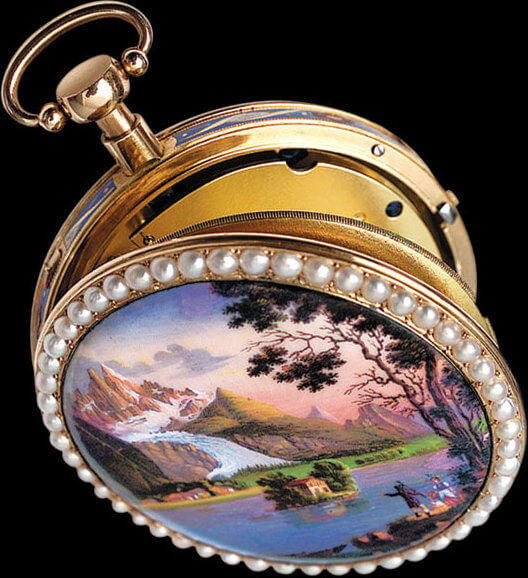A watchmaker and engineer by training, Michel Parmigiani soon opted for an independent life. After two years in-house, he decided to chance all and set up his own restoration workshop, alongside a second activity finishing blancs roulants (ed. note: a working movement without escapement, prior to adjusting and finishing) and the creation of one-off pieces for collectors and brands. His decision was all the more admirable as this was 1975, when quartz looked set to sweep mechanical watchmaking off the face of the earth. There was nowhere to train in restoration at this time. A watchmaker had to learn everything himself, seeking out information in libraries, museums and private collections. Michel Parmigiani was immediately fascinated by watchmaking’s rich heritage, spanning almost five centuries and an abundance of inventions. For him, it is one of the most creative professions ever to have existed.
Delving into the past
In restoration, patience is indeed a virtue. The restorer must take time to put the parts back into their original context, to understand how they were made and how he will turn his hand to the job. First though, before any decision can be made, he must observe, analyse, evaluate and gather information. Only then can he begin his work, coaxing the piece back to its former beauty while respecting its aesthetic qualities and technical characteristics. The restorer takes a significantly different approach from the repairer, who simply gets the piece working again, all too often at the risk of causing irreparable damage. In addition to restoration, the restorer can be asked to work on the conservation of an object. This implies keeping it in good condition, cleaning it of traces such as pollution, and protecting it against future deterioration.
The actual restoration of a piece means to restore it to working order, which can involve reproducing worn or missing parts. To remain faithful to the original, the restorer must first conduct meticulous research, cross-checking every available piece of information: examining the marks on the movement, identifying the style and, where possible, the maker, and searching for works with a comparable or even identical structure. An object can take as much as a year to restore. Michel Parmigiani wishes restoration weren’t such an undervalued profession. “We’re still thrown in the same bag as repairers. A lot of people don’t understand the respect owed to technique. Nor do they realise how much time and skill it takes to restore a piece. They are willing to spend a fortune to buy a watch, clock or automate – it’s not unusual to see items go for double or triple their estimate at auction – yet they don’t grasp the importance of the movements that bring them to life. All they ask is that they work. The artistic dimension completely escapes them.”
Honesty as the only policy
At Parmigiani, theory is put into practice. Mechanisms are restored by artists working under the guidance of a man who has the restoration of hundreds of masterpieces of all origins to his credit. As a young restorer just starting out, a collector in Basel entrusted him with treasures from his collection. He rapidly earned his place among the top three or four specialists in the world. A recognised expert, from 1980 he was tasked with the restoration of the Sandoz Foundation collection and, over the years, the relationship he forged with its members led to the creation of the Parmigiani Fleurier brand in 1996. The Foundation expressed its support through a majority stakeholding in the company.
For the partners, all passionate about watchmaking, there was never any doubt that the company would continue restoration work. The creativity that Michel Parmigiani can now express through the brand is a natural prolongation of watchmaking history, and of his own life story. Restoration is an excellent school that teaches incomparable skills and knowledge. The guarantee of competency and coherency, it is the foundation on which the company’s entire culture is built. The firm currently employs three specialised watchmakers who provide a meticulous account of each restoration project. These are compiled into a detailed file, illustrated with photos of the piece. Any reconstructed element appears clearly as such; no attempt is ever made to disguise it by inventing traces of passing time. The same is true in art restoration, where professional honesty dictates that restoration work is made clear by the use of a slightly more mat paint.
(1) Quarter-repeater pocket watch with automate signed Daniel Isaac Piguet and Philippe Samuel Meylan. Made circa 1820, restored by Parmigiani Fleurier. Maurice & Edouard Sandoz Collection The dial includes an automate of a dog and swan. The dog wags its head and barks every hour and quarter.
(2) Singing-bird mirror by the Rochat brothers made in Geneva circa 1818. Restored by Parmigiani Fleurier (approx. 250 hours). Currently displayed at Château des Monts. The flower at the top of the mirror opens to reveal a singing, dancing bird.
(3) Frog dated early 19th century Restored by Parmigiani Fleurier. Gold, enamel, pearls and rubies. The frog leaps and croaks alternately.














